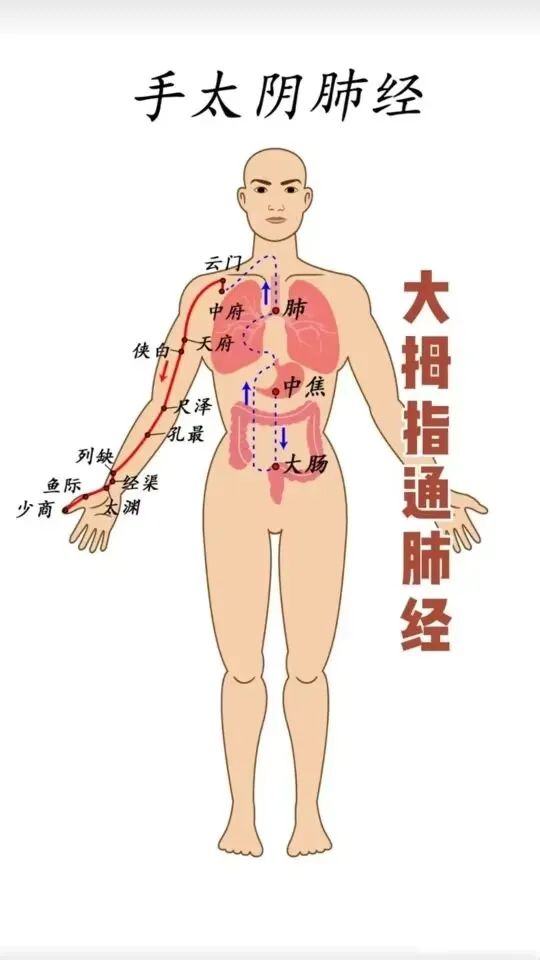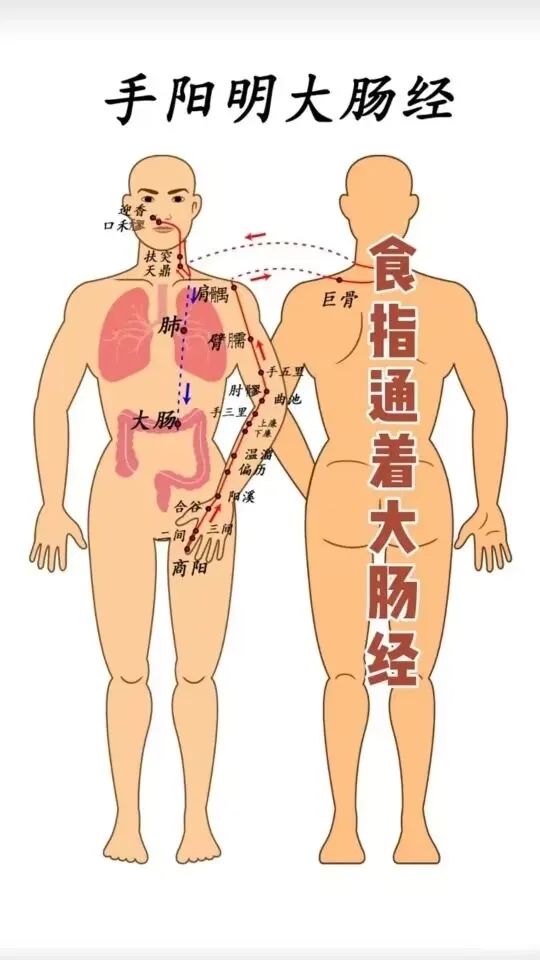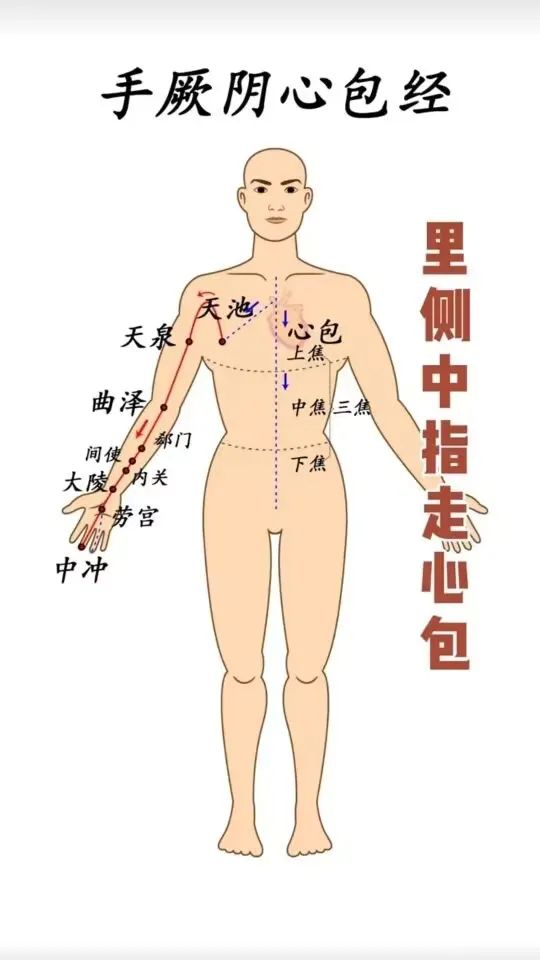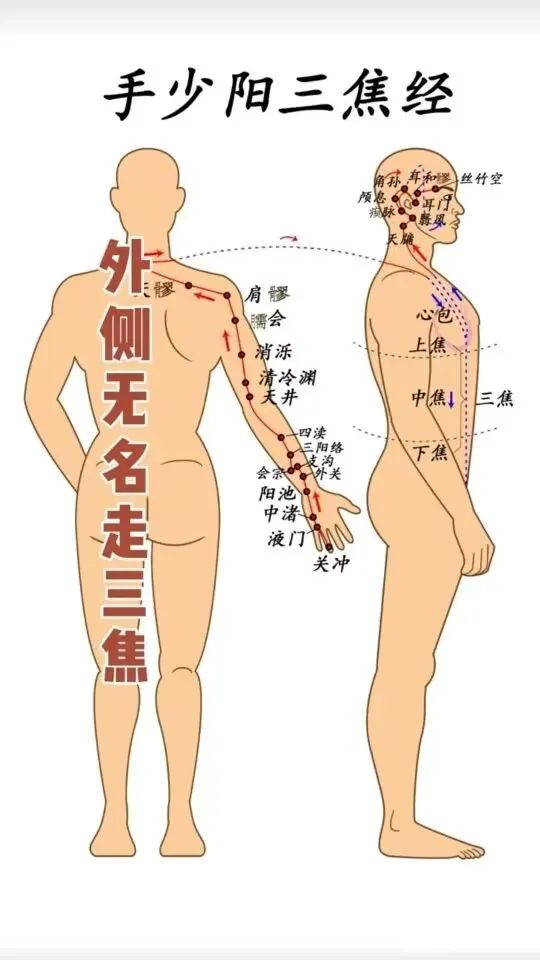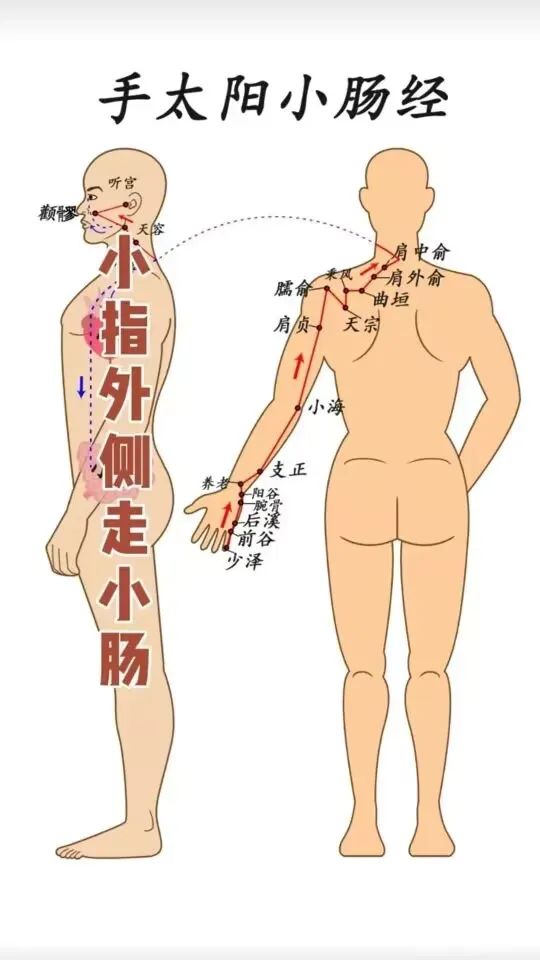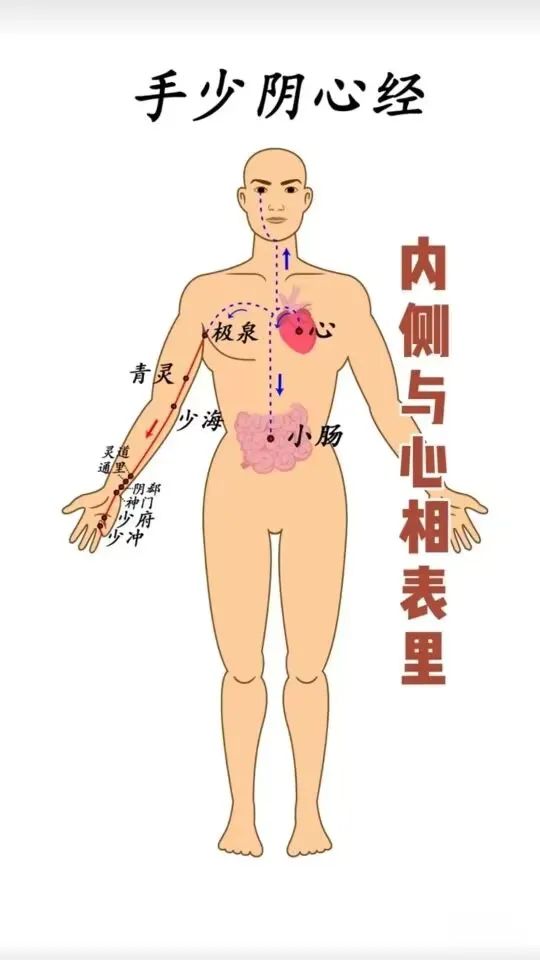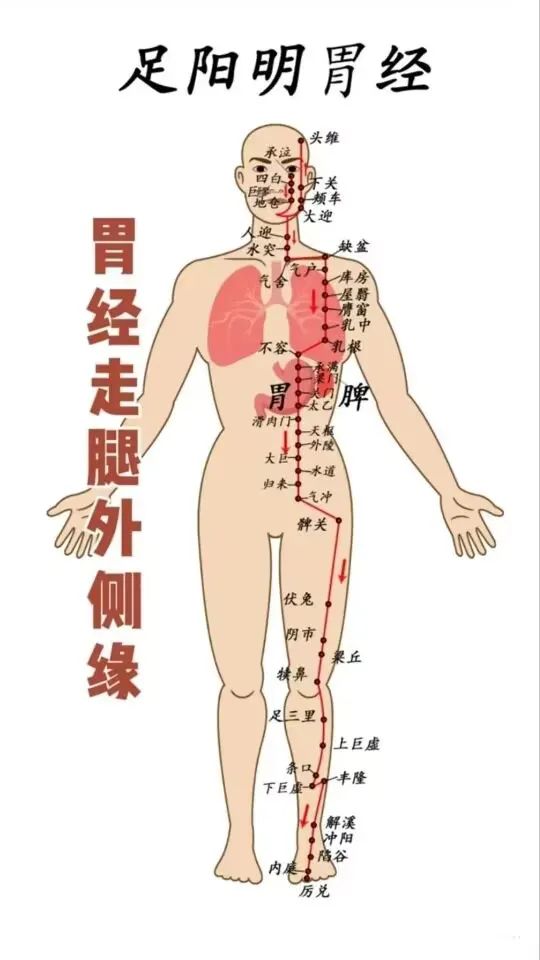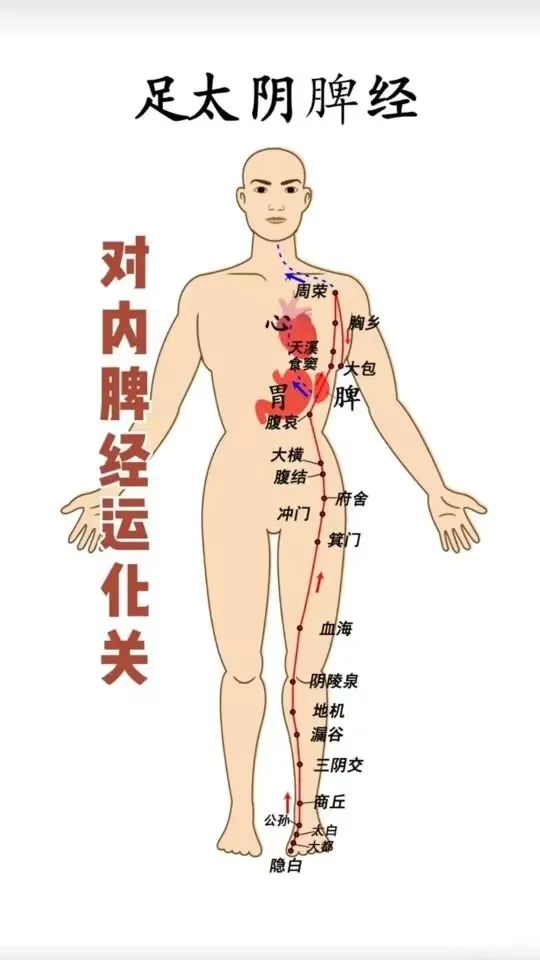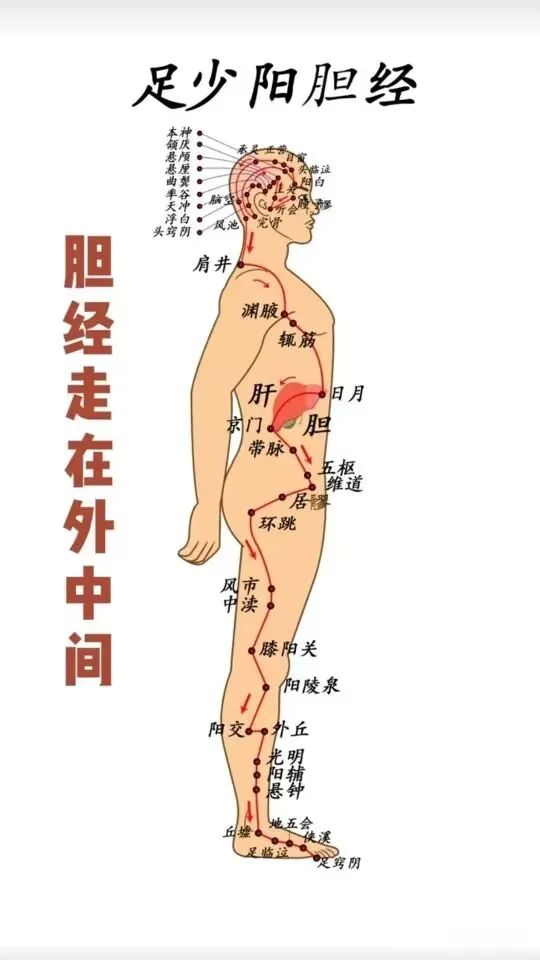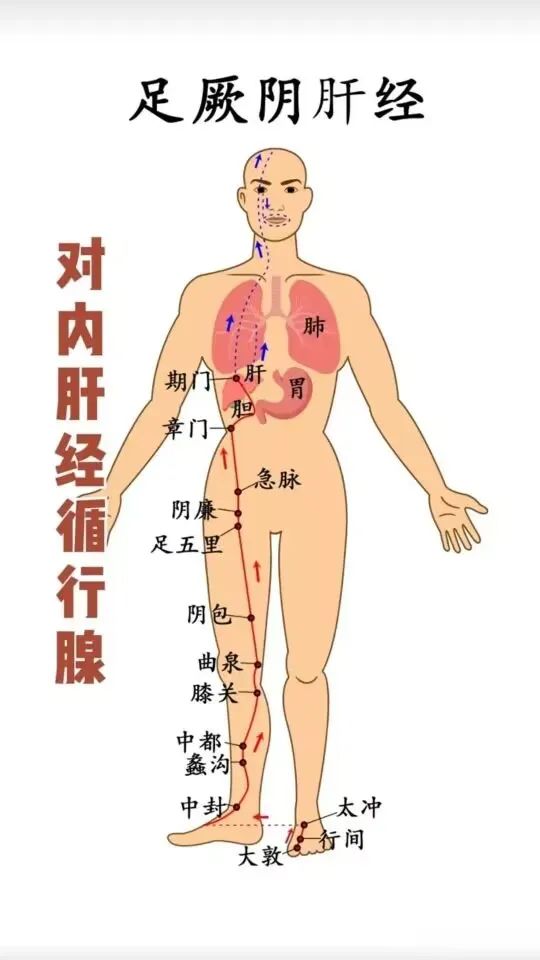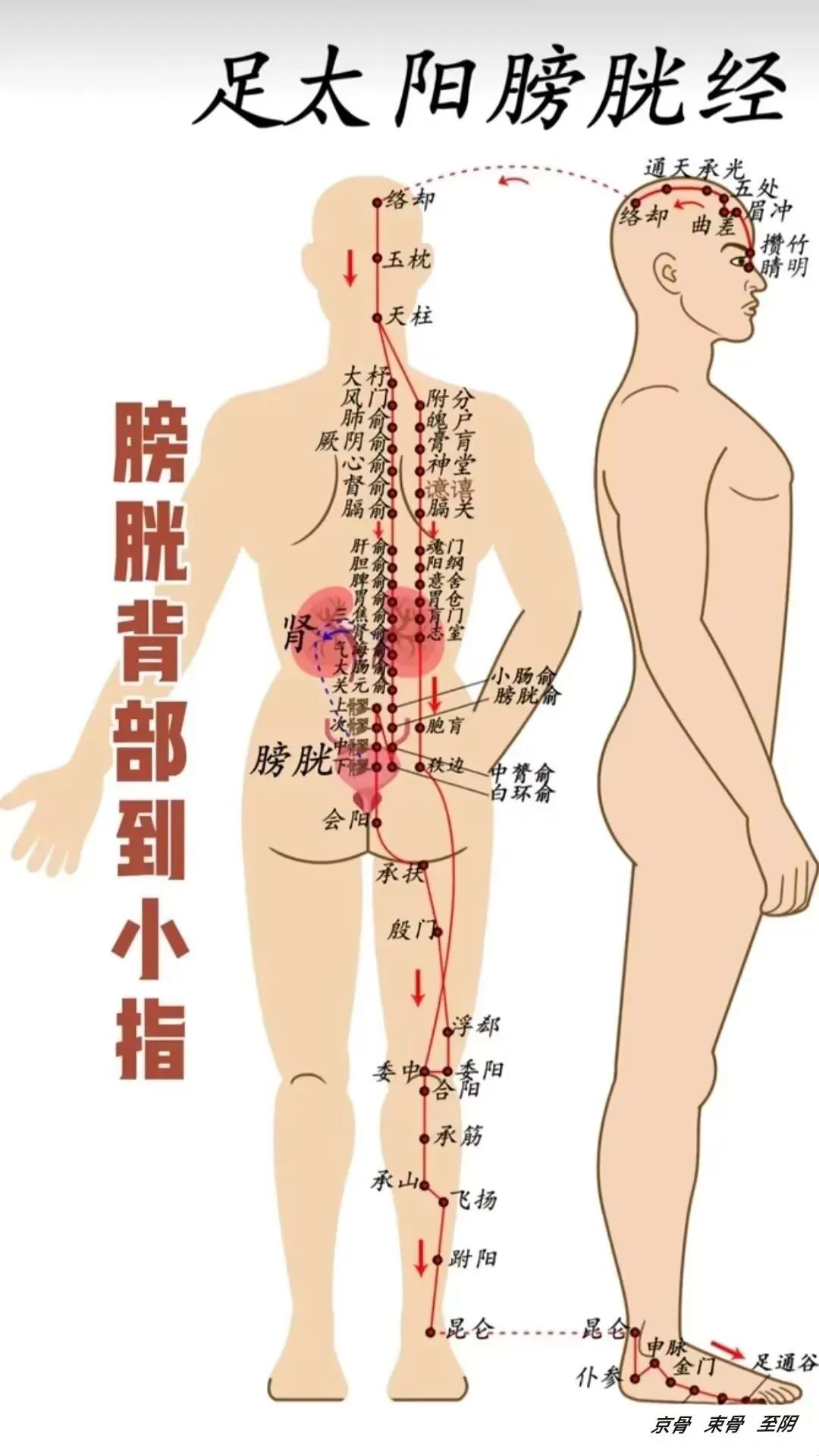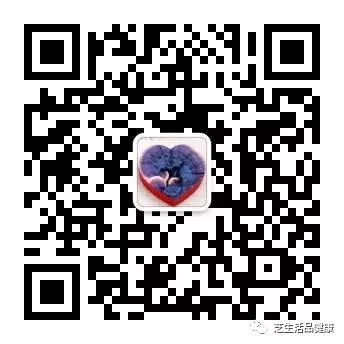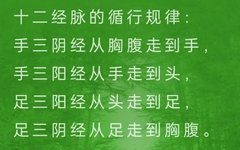
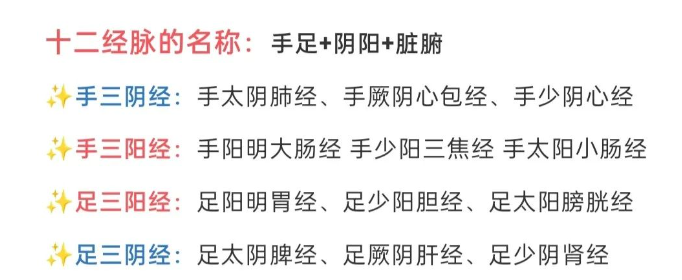
✨ The pathways and connection patterns of the twelve meridians in the human body

(1) Pathway Patterns:
The three Yin meridians of the hands originate from the organs and travel to the hands; the three Yang meridians of the hands travel from the hands to the head;
The three Yang meridians of the feet travel from the head to the feet; the three Yin meridians of the feet travel from the feet to the abdomen (chest).
The Hand Taiyin Lung Meridian (手太阴肺经) starts from the chest and travels along the inner side of the upper limb to the fingertips;
The Hand Yangming Large Intestine Meridian (手阳明大肠经) starts from the fingertips and travels along the outer side of the upper limb to the face;
The Foot Yangming Stomach Meridian (足阳明胃经) starts from the face and descends along the trunk to the outer side of the lower limb to the toes;
The Foot Taiyin Spleen Meridian (足太阴脾经) starts from the toes and travels along the inner side of the lower limb to the abdomen and chest.
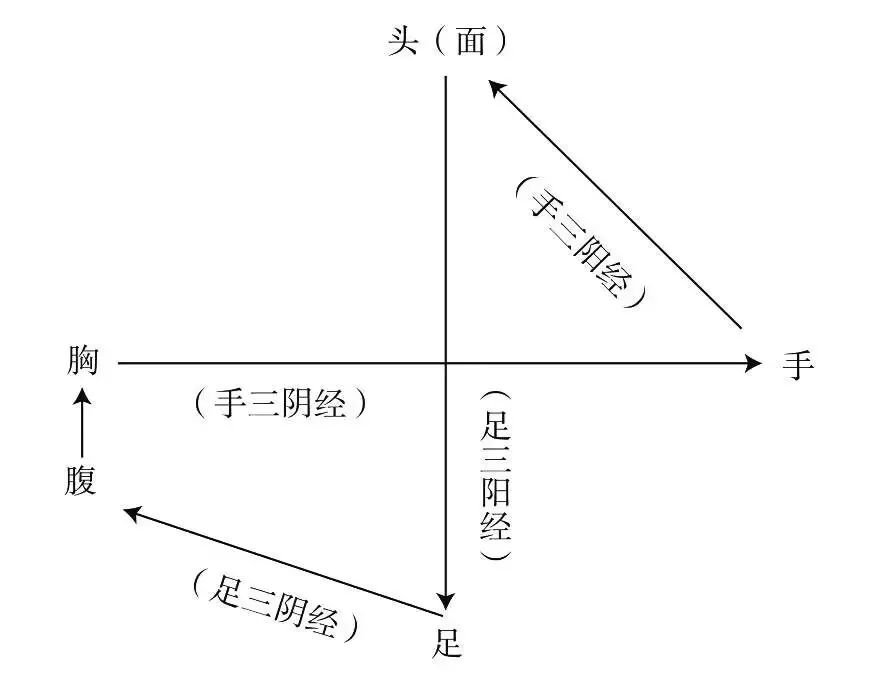
(2) Connection Patterns:
1. The Yin meridians and Yang meridians of the same organ connect at the ends of the limbs.
The Hand Taiyin Lung Meridian (手太阴肺经) and the Hand Yangming Large Intestine Meridian (手阳明大肠经) connect at the tip of the index finger;
The Hand Shaoyin Heart Meridian (手少阴心经) and the Hand Taiyang Small Intestine Meridian (手太阳小肠经) connect at the tip of the little finger;
The Hand Jueyin Pericardium Meridian (手厥阴心包经) and the Hand Shaoyang Sanjiao Meridian (手少阳三焦经) connect at the tip of the ring finger;
The Foot Yangming Stomach Meridian (足阳明胃经) and the Foot Taiyin Spleen Meridian (足太阴脾经) connect at the tip of the big toe;
The Foot Taiyang Bladder Meridian (足太阳膀胱经) and the Foot Shaoyin Kidney Meridian (足少阴肾经) connect at the tip of the little toe;
The Foot Shaoyang Gallbladder Meridian (足少阳胆经) and the Foot Jueyin Liver Meridian (足厥阴肝经) connect behind the toenail of the big toe.
2. The same named Hand and Foot Yang meridians connect at the head and face.
The Hand Yangming Large Intestine Meridian (手阳明大肠经) and the Foot Yangming Stomach Meridian (足阳明胃经) connect beside the nostrils;
The Hand Taiyang Small Intestine Meridian (手太阳小肠经) and the Foot Taiyang Bladder Meridian (足太阳膀胱经) connect at the inner canthus of the eye;
The Hand Shaoyang Sanjiao Meridian (手少阳三焦经) and the Foot Shaoyang Gallbladder Meridian (足少阳胆经) connect at the outer canthus of the eye.
3. The Yin meridians of the feet and hands connect in the chest.
The Foot Taiyin Spleen Meridian (足太阴脾经) and the Hand Shaoyin Heart Meridian (手少阴心经) connect in the heart;
The Foot Shaoyin Kidney Meridian (足少阴肾经) and the Hand Jueyin Pericardium Meridian (手厥阴心包经) connect in the chest;
The Foot Jueyin Liver Meridian (足厥阴肝经) and the Hand Taiyin Lung Meridian (手太阴肺经) connect in the lungs.
✨ Distribution Patterns of the Twelve Meridians
The twelve meridians are symmetrically distributed on both sides of the body. Although each meridian may have twists and turns or cross over each other, they generally run vertically, either from top to bottom or from bottom to top.
(1) Distribution in the Head and Face
The three Yang meridians of the hands terminate at the head, while the three Yang meridians of the feet originate from the head.
“The head is the meeting point of all Yang”: the six Yang meridians of the hands and feet converge in the head and face.
The distribution characteristics of the Yang meridians are:
Yangming is in front, Shaoyang is on the sides, and Taiyang is at the back.
The Yangming Meridian (阳明经) runs along the face and forehead;
The Shaoyang Meridian (少阳经) runs along the sides of the head;
The Taiyang Meridian (太阳经) runs along the cheeks, the top of the head, and the back of the head.
The Yin meridians do not originate or terminate at the head and face, but some Yin meridians or their branches can reach the head and face:
The branches of the Hand Shaoyin Heart Meridian (手少阴心经), and the Foot Jueyin Liver Meridian (足厥阴肝经) reach the eyes; the Foot Jueyin Liver Meridian connects with the Governor Vessel at the top of the head; the branches of the Foot Shaoyin Kidney Meridian reach the root of the tongue; the Foot Taiyin Spleen Meridian connects to the base of the tongue and spreads under the tongue.
(2) Distribution in the Trunk
The three Yin meridians of the hands all run from the chest to the armpits,
The three Yang meridians of the hands run along the shoulder and scapular region.
The three Yang meridians of the feet run from top to bottom,
The Foot Yangming Meridian (足阳明胃经) runs in front (chest and abdomen),
The Foot Taiyang Meridian (足太阳膀胱经) runs in the back (lower back),
The Foot Shaoyang Meridian (足少阳胆经) runs along the sides of the body.
The three Yin meridians of the feet run from bottom to top along the abdomen and chest.
The distribution pattern of the twelve meridians in the abdomen and chest:
From the inside out, they are: Foot Shaoyin Kidney Meridian (足少阴肾经) ~ Foot Yangming Stomach Meridian (足阳明胃经) ~ Foot Taiyin Spleen Meridian (足太阴脾经) ~ Foot Jueyin Liver Meridian (足厥阴肝经).
(3) Distribution in the Limbs
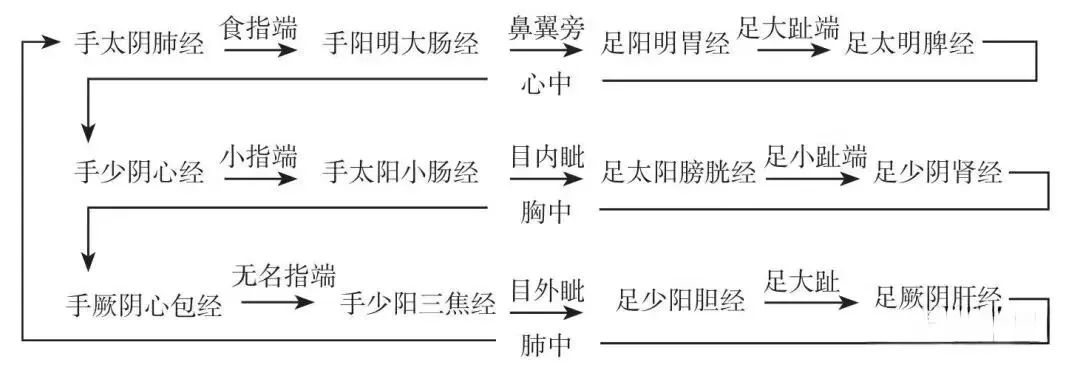
The hand meridians run in the upper limbs, while the foot meridians run in the lower limbs;
The Yin meridians run along the inner sides, while the Yang meridians run along the outer sides.
In an upright position, with arms naturally hanging down and thumbs facing forward, the distribution pattern of the limbs is:
The Yin meridians of the hands and feet are: Taiyin (太阴) at the front edge, Jueyin (厥阴) at the midline, Shaoyin (少阴) at the back edge;
The Yang meridians of the hands and feet are: Yangming (阳明) at the front edge, Shaoyang (少阳) at the midline, Taiyang (太阳) at the back edge.
However, the Foot Jueyin Liver Meridian (足厥阴肝经) has an exception, where below 8 cun above the inner ankle, Jueyin runs in front, Taiyin runs in the middle, and Shaoyin remains at the back.
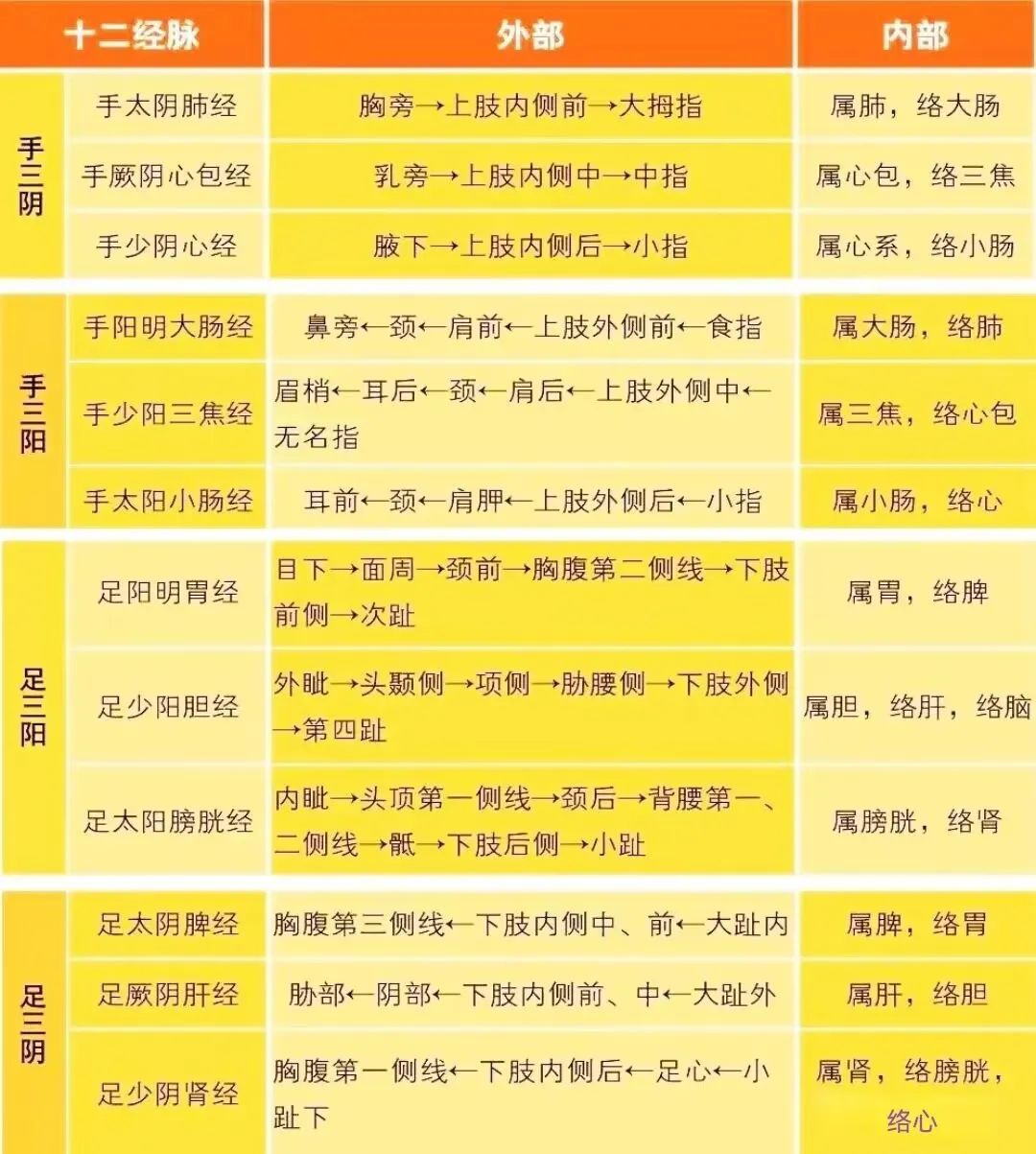
✨ The Interior-Exterior Relationships of the Twelve Meridians
Six pairs of “interior-exterior corresponding” relationships:
The Hand Taiyang Meridian (手太阳) and the Hand Shaoyin Meridian (手少阴) are interior-exterior; the Hand Shaoyang Meridian (手少阳) and the Pericardium Meridian (心包经) are interior-exterior;
The Foot Yangming Meridian (足阳明) and the Foot Taiyin Meridian (足太阴) are interior-exterior; this is the Yin and Yang of the hands.
The Foot Taiyang Meridian (足太阳) and the Foot Shaoyin Meridian (足少阴) are interior-exterior; the Foot Shaoyang Meridian (足少阳) and the Foot Jueyin Meridian (足厥阴) are interior-exterior;
The Foot Yangming Meridian (足阳明) and the Foot Taiyin Meridian (足太阴) are interior-exterior; this is the Yin and Yang of the feet.
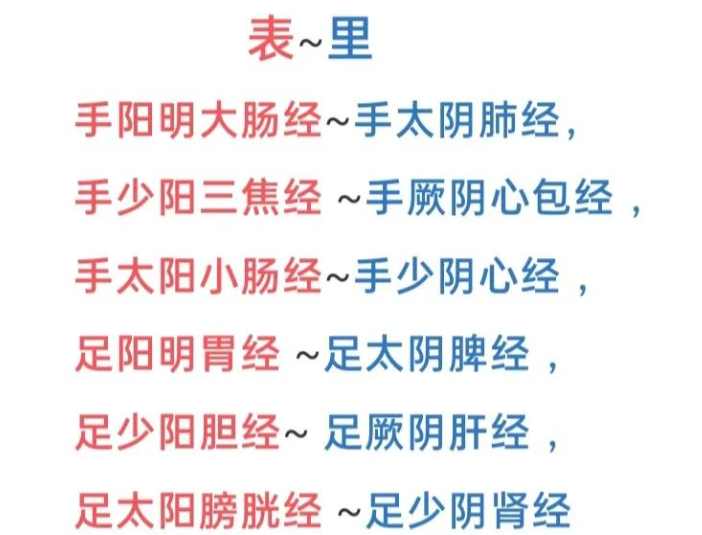
Two meridians that are mutually interior-exterior connect at the ends of the limbs, respectively running along the inner and outer sides of the limbs corresponding to the positions; they belong to the organs that are mutually interior-exterior; there are also connections between the meridian branches and collateral channels, forming the relationship of the interior-exterior connection of the organ meridians.
The interior-exterior meridians not only have a connection in terms of meridian belonging but also correspond to the organs in physiology, cooperating with each other in physiological functions, and influencing each other in pathological changes.
For example, when the spleen and stomach are affected, digestive absorption abnormalities may occur, and when lung heat transfers to the large intestine, constipation may occur. According to the principle of mutual communication of Qi between the interior-exterior meridians, in clinical treatment, the acupoints of the interior-exterior meridians are often used in combination.
✨ The Sequence of Qi and Blood Flow in the Twelve Meridians
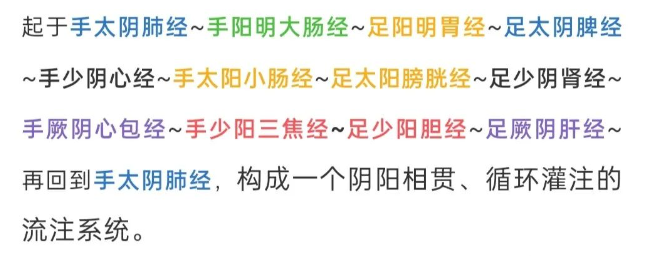
The twelve meridians are the main channels for the flow of Qi and blood. The twelve meridians connect end to end, with Qi and blood generated from the transformation of the essence of food and water in the middle jiao, ascending to the lungs, starting from the Hand Taiyin Lung Meridian (手太阴肺经), and flowing sequentially through each meridian, finally entering the Foot Jueyin Liver Meridian (足厥阴肝经), and then flowing back to the Hand Taiyin Lung Meridian (手太阴肺经), forming a system of Qi and blood flow in the twelve meridians that is “interconnected like a ring without end”.
